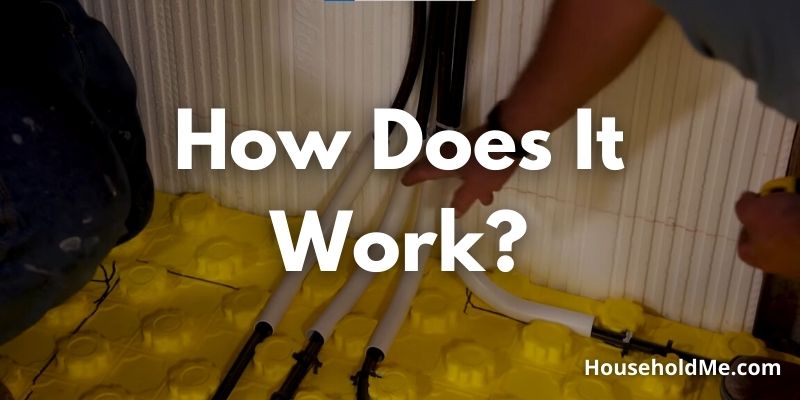Radiant heating systems work by distributing heated air directly over the surface of floors. They use a system of tubes or panels that are built behind walls, above ceilings, or beneath floors. The manner in which they heat up a room is similar to how a person feels direct heat while sitting across from a barbecue pit. But instead of charcoals or propane, it’s infrared radiation that slowly and evenly heats your entire body.

What Is Radiant Floor Heat?
Radiant floor heat can be divided into three categories: radiant air, electric radiant, and hydronic radiant. We can further split the three categories based on how they are installed inside of a home.
There are two ways to install radiant floors heaters: wet and dry. Wet installation involves using thermal concrete slabs installed right above the subfloor layer. On the other hand, a dry installation relies on two plywood layers that sandwich radiant tubing, which is fastened right underneath the subfloor.

How Does It Work?
Radiant floor heating systems will heat up a room via tubs will with hot waters or with electrical cables. Whichever system you go with, they will be securely fastened underneath our floor tiles, so you’ll never see or accidentally step on them.
The tubes or cables irradiate invisible waves that hover upward and release heat on any object in its path instead of heating up the ambient air in a room. This way of heating up a room means room temperatures remain relatively constant, whereas people inside of a radiant heated room won’t suffer from the cool ambient air.
Now, let’s look at how a classic heating system works. Most homes and apartments use radiators, which are metal objects that heat up to super-hot temperatures that can leave people with serious burns. Heated air from the radiator climbs upward toward the ceiling, losing its heating power during the climb. As the air cools down, it returns to the floor as dense, cool air, which is why your floors may be frigid during the winter season.

Pros of Radiant Floor Heating
1. Energy-Efficient
Unlike the common radiator, which can make a room seem frigid at times and excessively hot at others, underfloor heating does not overheat; rather, it maintains the temperature set by you via an on-the-wall thermostat.
2. Virtually Zero-Maintenance
This is perhaps the best news of all—radiant floor heating systems require practically no maintenance or after-installation fine-tuning at all. Many contractors also offer generous warranties, giving users peace of mind for many decades. In addition, there are control panels that are easy to operate and can even connect to your Wi-Fi, so you won’t have to tamper with dials or buttons manually.
3. Takes Up Less Space
Radiant floor heaters don’t take up any vertical space in a room, thereby allowing you to design a room for comfort and ease. Even the most modern radiators take up space on a wall; imagine the design freedom you have with heated floor—you can decorate the walls however you wish, whether to make a bold statement or simply to achieve a minimalist look, regardless of your style, and without having to plan around radiators.

4. Compatible with All Floor Types
Underfloor heating enables you to construct and design your home however you like, maximizing the use of available wall and floor space. Additionally, you have the freedom to choose the type of floor you want, as floor heating works well with laminate, wood, tile, stone, and carpet, among others.
5. Safety
With underfloor radiant heating, homeowners don’t have to think about accidentally colliding into sharp, scorching-hot radiators since all of the heating mechanisms are placed out of view since there is a huge layer of materials that separate the floor from the tubes.
